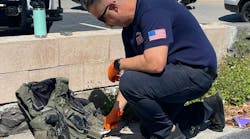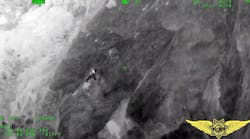A very wise exercise specialist has a mantra that we should all adopt, “exercise should never cause injury.” In Law Enforcement we need to take this a step further, training should never cause injury. Academy and training injuries to the muscles and extremities account for most of the training based soft tissue injuries we see and these injuries are costing your departments a lot of money and causing you a lot of unnecessary pain.
On a side note, pain fits into the “pain don’t hurt” or “work through the pain” bravado that permeates much of law enforcement. Sure there are times that we have to push through the pain a bit and there are just some things that will cause us some pain but and I mean but these events need to be very limited. Pain is your body’s way of telling you that an injury is occurring and you will take that injury out into the field with you.
As a “trainer” and strength & conditioning specialist I love to get a group of academy PT instructors, operators, FTO’s and fitness minded officers together and show them the light. Folks there are a lot of things that we are teaching or instructing our cadets and incumbents to do that are causing injury. Data does not lie, training injuries are the number one most preventable occurrence in LE and all it takes is a little understanding.
As group officers have some postural patterns that are somewhat specific to law enforcement, we must first understand what those patterns are and correct or break them. Otherwise we can cause injury to occur. Read back through this column as I have covered upper and lower crossed syndrome at length and how to correct it. This is required reading folks as you must understand what is wrong before we can fix the problem.
When it comes to training and PT there are some amazingly effective steps that we can follow to make training safer and give the officers some tools and knowledge to take back with them. Before doing any physical task go through step 1 and 2 below.
1. Use a foam roller: Self massage has become the new in thing in the sports performance world and with good reason. They allow you to release tight tissue and adhesions in the muscles that contribute to injury patterns and faulty movements. The foam roller is also self diagnostic, healthy tissue does not hurt to touch but unhealthy tissue is quite uncomfortable. In this case use the discomfort as a map, you will be amazed how good you feel and move after rolling. As an example rolling the calves of a cadet that is beginning to feel shin pain, the start of shin splints will more often than not fix the problem. Of course the cadet has to be comfortable telling you.
2. Stretch: I have harped, begged and pleaded in this column for officers to stretch every day pre-shift and pre-exercise. The benefit to having just rolled and having the time built into the PT to stretch is now that your tissue has been mobilized by the foam roller it stretches better and is much more effective. There are literally thousands of stretches you can do the best targeting calves, hip flexors, glutes, hamstrings, chest, lats and neck or as I call them the big 7.
3. Correct it before it breaks: While this seems like a simple concept as instructors and trainers we miss the ball on this big time. For so long we have just let officers do many of their exercises incorrectly or we dismissed weird movement patterns as “oh that just how they move” that we have gotten away from much of what hinders our performance. As a therapist if an officer cannot do a movement I want correctly then I / you are obligated to correct the issue. The questions to ask yourself are:
a) Is something too tight above or below where the problem is occurring? If so roll it and stretch it.
b) I rolled it and stretched it but it is still not better what do I do? Make it stronger; isolate the weak pattern and assign specific exercises to fire the muscles that are not doing their job. How you ask do I do that? Many of the corrective steps are in past articles.
By following this scientific approach we can create an academy and training structure that promotes healthy and safe PT while teaching officers a career skill of self care through massage and stretching that will reduce injury both in the academy and on the street. If, after all those steps are followed and the officer is still having difficulty, then a referral to the local Certified Athletic Trainer is warranted. The bottom line is to change a culture and progress officer safety through advanced performance takes a whole body approach and often requires the full attention of the team.
Web Links:
Related Forums Threads:
About The Author:
Bryan Fass is the author of “Fit Responder”, a comprehensive wellness plan for the first responder, and the Fit Responder Blog. Bryan has a Bachelor’s Degree in Sports Medicine and is certified as a licensed athletic trainer and a strength and conditioning specialist. He was a paramedic for over 8 years. Bryan has authored four books regarding fitness, wellness and human performance. Bryan is available for Consulting and Speaking on Public Safety Fitness Testing along with Fitness, Wellness and Injury Prevention Programs. Contact him via email to [email protected].


